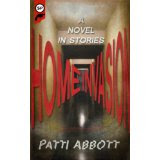Reading as much as I have about the West through the novels of Larry Watson, I was reminded of our friend, Ron Scheer, and his love of westerns. Here is one of his blog posts.
Mollie Davis, The Wire-Cutters (1899)
 |
| 1997 edition by Texas A&M Press |
It has been argued that The Wire-Cutters by Mollie Evelyn Moore Davis (1844-1909) was the
first western novel. It predates Owen Wister’s The Virginian by three years. Much of it is set during a range war
that erupted in West Texas in the 1880s with the introduction of barbed wire
fences across open range. It was written by a writer who knew West Texas from
having lived there.
But it’s a western without cowboys. The hero rides a horse
and is a frontier settler with some cattle, but his main cash crops are cotton
and pecans. Also, a third of the novel takes place in the Deep South, beginning
and ending with a heavy serving of melodrama. Looking for an authentic cowboy
novel that predates The Virginian, a
reader would do well to consider Wister’s own Lin McLean (1897).
Plot. The central
character, Leroy Hilliard, does not know that he was born to a wealthy
Louisiana plantation owner and his wife. Because he bears a mysterious
resemblance to his mother’s divorced first husband, she has her second husband get
rid of the boy. Without her knowledge, he is adopted by a high-ranking
Confederate officer, whom he comes to believe is his actual father. In fact,
the man is her much loathed first husband.
Years pass and the now grown-up Hilliard goes to West Texas,
where he has bought a farm. When barbwire fences begin cropping up across the
countryside and preventing open range cattle from getting to water, he’s among
the first to oppose them. But the arrival of a rich, idle, unscrupulous young
man, Alan Deerford, stirs up trouble for him. When Hilliard declines to disturb
fences that have been erected legally, Deerford leads the local young men on
nighttime raids of more wire cutting.
Deerford has a bad influence on an impressionable younger
man, Jack, who was once Hilliard’s best friend. Jack goes missing and foul play
is feared. In time, his body is found with Deerford’s knife through his heart,
and Deerford has disappeared. Meanwhile, the gang of young wire-cutters is
jailed for their mischief.
Hilliard magnanimously comes to their defense, acting as
their attorney at the trial. After an impassioned plea, he gets a not guilty
decision from the jury. He then pursues Deerford to bring him to justice and
finds him at the Louisiana plantation where the story started and a cascade of
revelations awaits both men.
Romance. Intertwined
with the tangled plot of the two men is a romance in which they are rivals for
the hand of the same woman, the pretty Helen Wingate. She has come west from
Kentucky as a guest of a schoolmate, Margaret Ransome, who is Hilliard’s close
friend.
He is instantly taken with Helen. But he soon realizes that
Deerford intends her to be his wife as well. We don’t know until well into the
novel that Helen does not love Deerford and accepts his attentions only out of
a mixture of fear and politeness. As she abruptly leaves to return home,
Hilliard is pleased to learn that she is quite fond of him and will happily
entertain a proposal of marriage. But in an impulsive moment, she marries
Deerford, who is one step ahead of the law, and sails off with him to Europe.
Hilliard’s friend Margaret has much more to commend her as a
wife and soul mate. She is brave, thoughtful, attentive to the needs of others.
You don’t have to read deeply between the lines to see that she loves Hilliard.
We keep expecting him to realize this, but there is little to indicate at
novel’s end that he and Margaret are destined to be together.
Character. Settling
in Texas, Hilliard is good humored and shows his grit by never complaining. His
neighbors quickly warm to him as he shows himself able to “straddle a horse and
shoot a rifle, sleep on the ground in camp,” and join the men in talk about
politics (pp. 92-93). At social gatherings, he catches the eye of the women,
who find him to be a good dancer and candy-puller.
He stands out as a principled man by comparison with most of
the other men of the community, whose ethics are flexible. He respects the law
and does the right thing, though it means the loss his popularity. He becomes
an honorable man with few friends.
Style. The
Wire-Cutters is an interesting example of a hybrid novel, mixing
plantation and western themes. On the one hand is an ante-bellum sensibility,
with a refined Southern aristocracy and its “negro” retainers. On the other is
the egalitarian spirit of the frontier. Each world gets its own style of
storytelling.
The plantation chapters have a sunny, dewy, perfumed
exterior, but dark passions seethe under the surface. A young and unhappy wife
takes a knife to a portrait of her husband, slashing his image across the
cheek. An image of this same slash shows up as a birthmark on her first son’s
face. Southern gothic comes to mind.
The Texas chapters are sharply realistic, with dusty roads,
blistering heat and blue northers, dying cattle on the open ranges. The social
fabric is richly detailed, the country folk often comically portrayed.
One example: Between services at Sunday church gathering,
the men group outdoors on one side of the church and the women on another. The
girls studiously avoid eye contact with the eligible bachelors, who wait until
leaving time to race after them on their horses and ride along next to them.
Wrapping up. Davis
was born in Alabama. From 1855, her family lived in Texas, and she earned a
reputation as a poet. Marriage took her to New Orleans in 1879, where her
husband was editor of the New Orleans Picayune. A prominent
figure in literary circles there, she later became a newspaper editor herself,
while continuing to write fiction and poetry.
The Wire-Cutters was
preceded by Under the Man-fig (1895),
a novel set in a Texas river town on the Brazos. It is a romanticized account
of plantation life during the years before, during, and after the Civil War. A
collection of short stories, An Elephant’s Trunk (1897) included titles previously published in Atlantic
and Harper’s. The same year saw her history of Texas, Under
Six Flags.
















2 comments:
We've lost a number of talented writers and good people among FFB participants...thanks for the reminders.
I miss Ron as well. Thank for the reminder.
Post a Comment